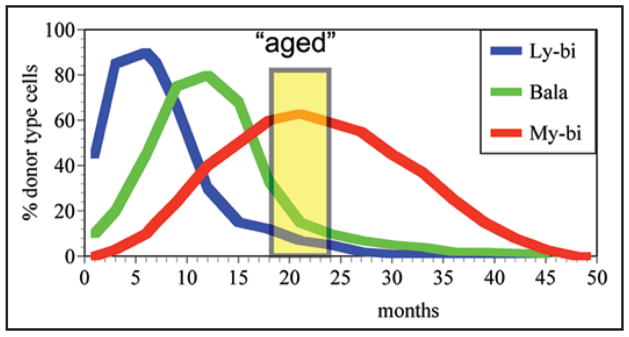Figure 3.
The different lifespans of HSC affect their representation in the aged host. Lifespans are measured as the time that a HSC contributes to mature cells (Percent donor type cells). Donor type cells were measured in blood every other month as described in detail previously.25 Most Ly-bi HSC (blue) repopulate rapidly after transplantation but have short lifespans. Bala HSC (green) have a medium lifespan and initiate repopulation slower than Ly-bi HSC. My-bi HSC show a very slow onset of repopulation, but these HSC have a very long lifespan. The curves shown here are rough approximations and extrapolations of the average lifespans of these classes of HSC. For original data on the lifespans see Muller-Sieburg et al.25 A mouse is considered old after 18 months of age and most aging experiments are performed with mice aged 18 to 24 months (yellow box). This marks a time in most strains when mortality is still limited, but age-related effects are clearly present.68 Note that all types of HSC will eventually cease to generate mature cells, which is defined as the end of their lifespan. However, as populations, all types of HSC outlive the original donor albeit to different extents. The differences in lifespan can account for the enrichment of My-bi HSC in the aged host.

